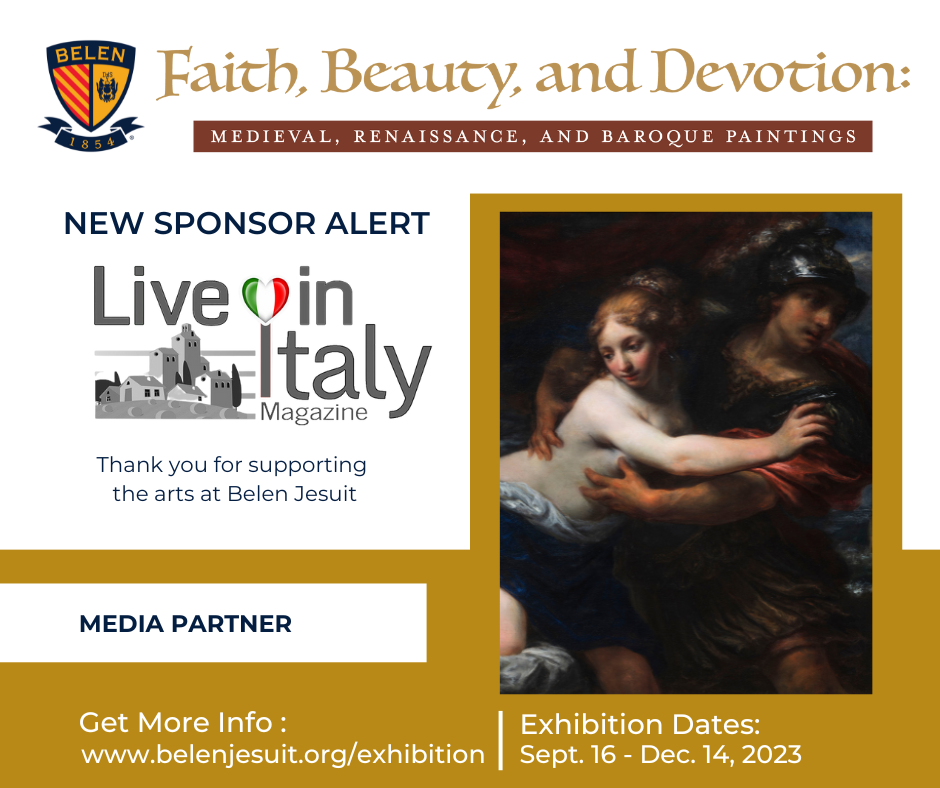The Palio di Siena is not just a horse race—it is the beating heart of this Tuscan city. Siena’s identity, traditions, and social life revolve around this centuries-old event. To understand Siena, you must experience the Palio in person.
Siena’s Spirit and Ferragosto
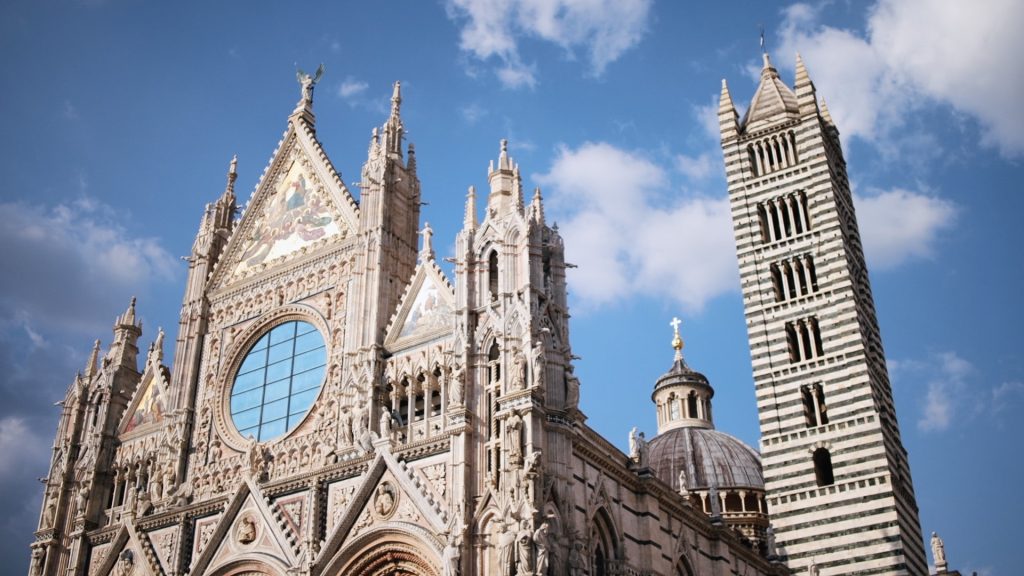
Siena is a small city with a grand history. While Italy empties during August holidays, Siena comes alive. August 15, or Ferragosto, is a national holiday across Italy. The word comes from the Latin feriae Augusti, meaning “Augustus’ rest.” Originally a Roman celebration, it later became a Catholic holiday. Today, it marks the summer peak with fireworks and food festivals.
In Siena, Ferragosto is only the day before the Palio. The week leading up to August 16 is filled with events. Sienese people return from across the globe to witness and take part in this tradition.
What the Palio di Siena Is—and Is Not
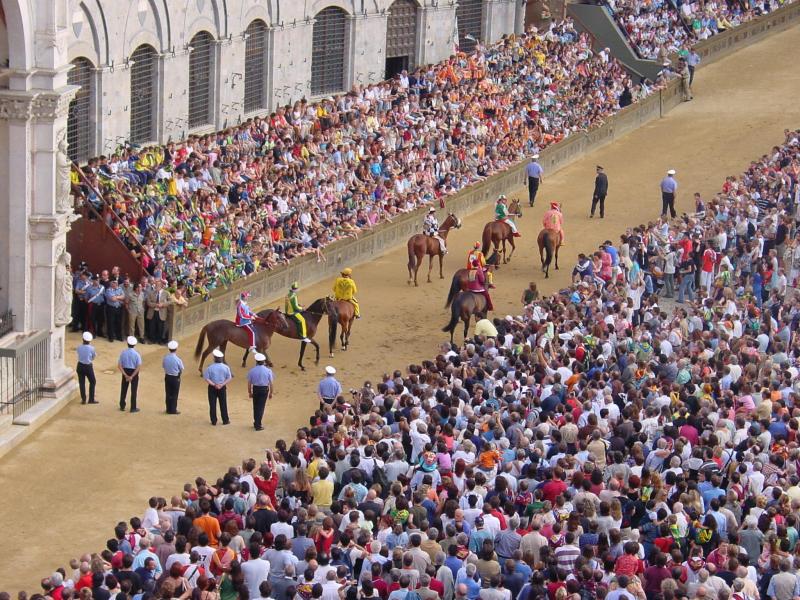
The Palio is not a tourist attraction, a historical reenactment, or merely a sporting event. For the Sienese, it is a way of life. The city’s neighborhoods, called Contrade, form the foundation of the Palio. These communities foster loyalty, rivalry, and cooperation that extend far beyond race day.
The word “Palio” comes from pallium, Latin for “banner.” The prize is a painted silk banner created by renowned artists. The race features bareback horses circling Piazza del Campo, each representing a Contrada.
The Race and Its History
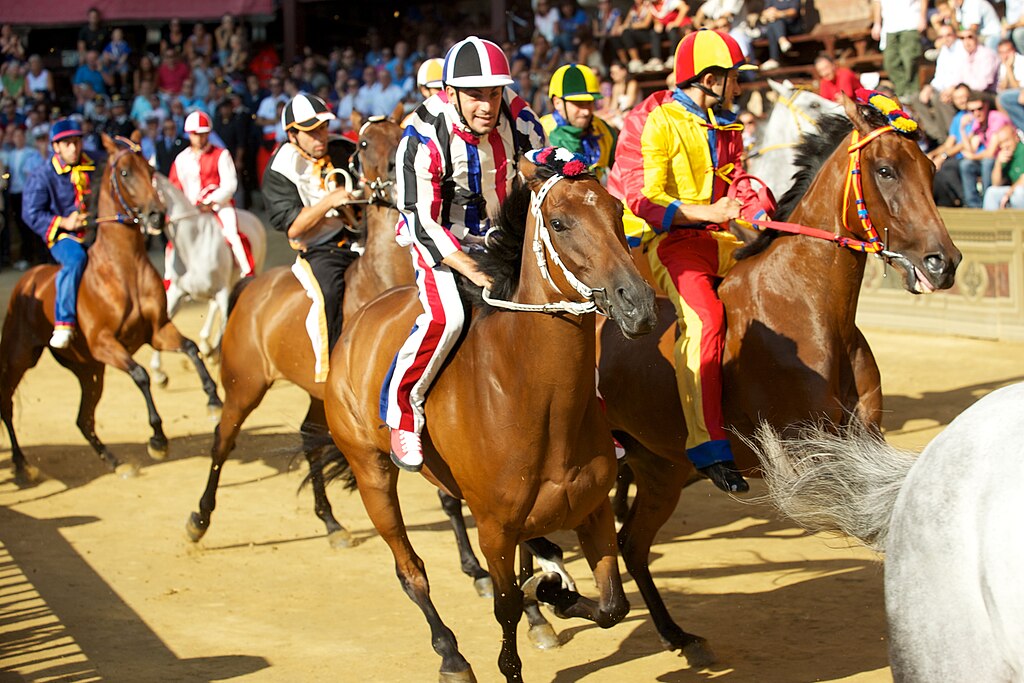
The Palio di Siena takes place twice a year, on July 2 and August 16. Ten Contrade compete in each race, their jockeys dressed in vibrant colors. The origins date back to the Middle Ages. The August race honors the Assumption of the Virgin Mary, Siena’s patron saint. The July race, dedicated to the Madonna of Provenzano, began around 1600.
Initially, races ran through Siena’s streets—called Palio alla Lunga. In the 17th century, the race moved to Piazza del Campo in a circular format, known as Palio alla Tonda.
Contrade: Siena’s Soul
Siena’s historic center is divided into 17 Contrade, each with its own church, fountain, museum, and social club. These districts evolved from medieval military units defending the city, especially against Florence. Even today, Contrade maintain ceremonial roles and traditions, with leaders known as Capitani.
Three central areas belong to no Contrada: the Duomo Cathedral, Piazza del Campo, and the Medici Fortress.
Life in a Contrada
Membership comes from birthplace or family ties, often formalized through a non-religious baptism. Children grow up immersed in Contrada life, forming lifelong bonds and rivalries. Such rivalries can influence choices as personal as where to buy a home.
Contrade provide community support, from helping elders to mentoring youth. This tight-knit life also has drawbacks. Some residents remain deeply rooted in local affairs, showing little interest in the outside world.
Experience Siena
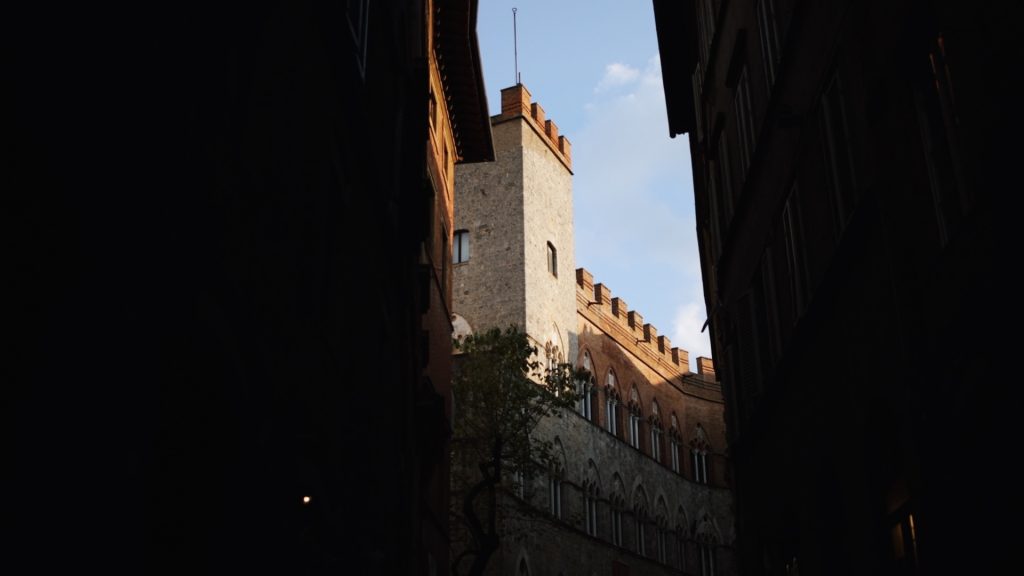
The Palio di Siena is both light and shadow—pride and rivalry, joy and tension. Yet it remains one of Italy’s most authentic cultural expressions. To understand it, you must see it, hear the drums, and feel the crowd’s energy.
Vocabulary
Ferragosto | National holiday, August 15
Cavallo | Horse
Fantino | Jockey
Corsa | Run
Piazza | Square
Campo | Field
Vittoria | Victory
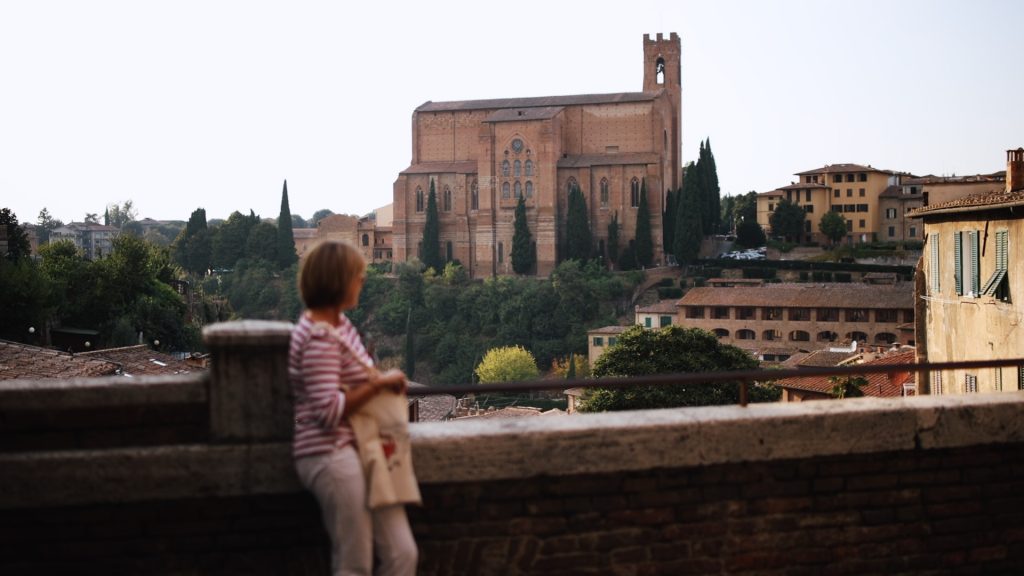
For more cultural experiences in Italy, visit Chiara’s Tuscany.


